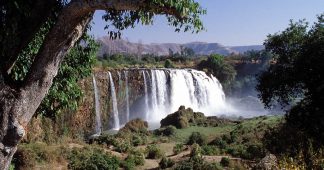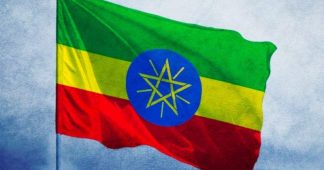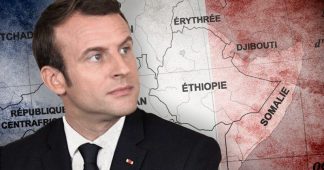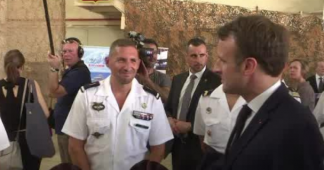Addis Abeba, December 15/2020 – In my March 5, 2019 article, can Ethiopia make the transit to stability? I discussed in more detail the causes and dynamics of the political changes in Ethiopia, leading to unintended consequences with far-reaching implications for the stability of the country. I also considered five scenarios — Consensus Federalism, Transitional Government, Dictatorship, Confederate Ethiopia and Fragmentation- that may come about over a couple of years.
In a nutshell, I argued that central to all the protracted armed conflicts Ethiopians have fought, and the political problems they now face are questions with deep roots in the Ethiopian state.
Sooner than later, as information trickles in from the conflict zone, the many casualties, violations and destruction will unravel complex issues within and outside the country.
Unavoidably, a militaristic government preoccupied with marginal functions of the state, in which the security of the regime trumps all other aspects of human security in its pursuit of purported national pride will face more, not less challenges.
The current armed conflicts are outcome of these perennial challenges. To be sure, the desire for unity is ever-present among the peoples of Ethiopia. What the country has always lacked, and still lacks, is just and democratic governance over its many and widely diverse cultures, religions and elements of community identity. The ever-increasing demand for self-determination and self-rule is an outcome of the short supply of democratic constitutional governance. Ethiopia’s problems, then, are solved by more federalism of cultures, not less. Then what is the cause of the armed conflicts in Ethiopia now and before? And what are the way forward?
The causes
Ethiopia faces what Francis Deng calls a ‘war of visions’ as to its future. On the one hand, there is the vision of centralization, the basis of which is to reclaim quasi-unitarist powers that have been – at least de jure – dismantled over decades. That vision brings back memories of Ethiopia’s highly contested history of forcible assimilation. The same unitarist governance style, albeit including a mild level remnant decentralization, is what is now in the making. Feeding on extreme nationalism and quasi-imperial ambitions, proponents of this vision are hellbent on securing and monopolizing power through whatever means are available. When possible, they employ constitutional norms and when necessary, unconstitutional, brutal, oppressive means including the genocidal conflicts on those who resist. This is a vision that is inherently undemocratic, antagonistic to multiculturalism, and even fascistic. On the other side is a vision of federalism, power in the hands of the constituent units, greater devolution of power, more autonomy, confederal arrangements, self-determination and even, where necessary, independence from the central authority. Spanning the two extremes are overlapping visions based on maintaining the current constitution through various rectification processes.
Proposed solutions
A war of visions can only be resolved only through a comprehensive and all-inclusive dialogue, the first step towards which would be the recognition that there can be no military solution to the war of visions.
The solution lies in building bridges between communities and narrowing the gulf between the visions of the different political constituencies. To do this, the best option of all would be a national dialogue. National dialogues do not necessarily resolve all a country’s problems, and they can be long-winded in reaching some agreements. They do, however, offer three primary benefits over-simplistic processes of negotiation between political parties and armed forces.
To chart a transitional pathway towards a peaceful, democratic and prosperous Ethiopia, armed conflicts and the media wars must stop
First, unlike fragmented negotiations and exclusive ‘elite’ agreements between political parties, armed or otherwise, national dialogues offer inclusiveness to all political and social forces of any significance. In addition to encompassing armed political parties, a national dialogue could offer a framework to bring in those groups that have not so far taken up arms, reducing their incentive to rebel and hopefully prompting them to request inclusion in the dialogue. Secondly, an inclusive dialogue provides a minimum common ground for tolerance, including the cessation of hostilities, a formal ceasefire, and a declaration of principles for sustainable, peaceful conflict resolution. Thirdly, a national dialogue that draws on collective wisdom helps define the country’s problems and narrow the differences between competing visions of the future.
Without ascertaining the facts and truths behind assassinations, atrocities, displacement and armed conflict, Ethiopian communities will find it extremely difficult to advance to the next level of reconciliation and accountability
1. Cessation of all forms of hostilities, including media war
To chart a transitional pathway towards a peaceful, democratic and prosperous Ethiopia, armed conflicts and the media wars must stop. All parties should publicly declare a cessation of all physical and verbal hostilities and pledge to remain peaceful.
2 . UN-mandated investigation into all atrocities and violations of international law
Without ascertaining the facts and truths behind assassinations, atrocities, displacement and armed conflict, Ethiopian communities will find it extremely difficult to advance to the next level of reconciliation and accountability.
Given the existence of highly polarized political forces, interference with, and pressure to influence, shape, or inform the investigation’s outcome will be intense, making such an inquiry complicated and sensitive. Leaving aside the questions posed on the credibility of Ethiopian institutions, international NGOs such as Human Rights Watch and Amnesty International are widely considered partial and have been vilified and attacked from various quarters. For these reasons, only a publicly trusted and independent body with the appropriate will and resources can conduct such an investigation and only the UN is equipped to discharge such a heavy responsibility. The UN has expressed its readiness to conduct such an investigation. The result of such an investigation constitutes possibly the most important of those few factors that may determine the fate and direction of the country’s political future.
The argument in favor of a UN-mandated investigation rests on the public perception that the UN is the only institution that enjoys the necessary high level of trust in terms of integrity and capacity. It has the resources, the trust and the experience for the job. Given the backing of domestic political actors and the international community, the UN could readily insulate itself from unwarranted interference while executing such a mandate.
3. An all-inclusive and comprehensive national dialogue
The end-state of the dialogue may need to be an all-inclusive and comprehensive National Constitutive Dialogue (NCD) for reconciliation and the creation of consensus-based governance that can deliver stability, legitimacy, and constitutional democracy. Such a process has to take into account the realities on the ground, including the armed conflict in Tigrai, the detention of leading figures in opposition parties, political detentions, atrocities, assassinations and human displacement.
Envisioning the desired end-state requires selflessness and frank consultation, as well as compromise on bridging proposals. Each political constituency needs to articulate the concerns and aspirations for itself and the country, as a shared polity.
For this to happen, the various parties and stakeholders need to:
- Renounce the use of force to resolve disputes;
- Indicate their willingness to compromise and search for common ground and the peaceful resolution of disagreements and disputes;
- Recognize that dialogue is evolutionary in nature and offers the opportunity to engage in defining problems, articulating concerns, expressing aspirations, sharing visions and convincing all parties of the benefits of a cooperative approach;
- Take confidence- and trust-building measures between parties and stakeholders to identify three critical issues: (1) concerns and interests; (2) needs and aspirations; and (3) points of convergence and divergence;
- Envision constitutional democratic governance based on the will of the people;
- Agree on an inclusive and transparent process that articulates the particular concerns and aspirations of each party and at the same time, seeks sustainable solutions to current problems and fosters a commonly shared vision; and
- Cooperate with the UN, AU and other multilateral organizations involved in resolving the armed conflict.
Specific recommendations: design and conduct of an all-inclusive dialogue
Factors vital to the success of the dialogue:
A design for successful dialogue needs to be guided by a strategy because the defined end-state and goals determine the design. That design needs to elaborate on those factors vital for success. The effectiveness and eventual success of the strategy will depend on addressing the following vital [1] factors:
- Cessation of hostilities: Signing up to an agreement for a cessation of hostilities (or non-violence pact) by all parties and armed groups, before or at the start of the dialogue, should be a precondition for participation.
- Inclusivity of, and broad consultation with, all key stakeholders to enhance legitimacy and sustainability: Inclusivity encompasses the participation and representation of critical stakeholders, conflict-affected communities, and representatives of Ethiopian society in general.
- Establishing the political will of all parties and key stakeholders and sanctioning violations: to generate political will through concrete measures, to include targeted individual sanctions, regional travel bans, asset freezes and exclusion from political office.
- Robust and coercive compliance mechanisms: specific enforcement measures against violators. Such an approach would inform stakeholders of the sanctions that would await potential violators and more importantly, would deter potential violators from attempting to disrupt the dialogue.
- Gender: representation: participation of women is critical for the success of dialogue.
- Transparency: transparency in the process is essential to its success. While recognizing the need for some confidentiality, regular progress reports updates are critical.
Structure of the dialogue
- Structure of the dialogue forum includes core agenda items; criteria for the determination of participants; rules governing participation; seating arrangements; and dates and venues.
- Consultations with key stakeholders in a pre-dialogue forum, with written position papers solicited on key issues.
- Participants of such a dialogue may include, but are not limited to, the following:
- all political parties;
- armed groups;
- key stakeholders. These include representatives of segments of society capable of exercising influence over their own constituencies and political and armed groups. The process may also include factions likely to engage in future conflict should their concerns not be addressed in the dialogue. Key stakeholders are to be identified in a pre-consultation phase of stakeholder mapping;
- the dialogue’s design will be informed and shaped by stakeholder mapping in pre-forum consultations, and by participants’ key findings.
- The dialogue design should include a realistic timeline and an implementation roadmap.
Communications strategy
There will be a need for a communication strategy, the aim of which is effectively to engage with stakeholders, publicize progress in the dialogue, build and maintain trust, address misinformation, and change behavior and perceptions where necessary. A communications plan needs to set out:
- Key strategic messages;
- means and mechanisms for communication;
- clear protocols for the release of information;
- regular sessions to discuss press releases and interviews; and
- regular updates to partners and stakeholders.
The role of the international community
Intrinsic factors for such dialogue’s success are the political will exhibited by the parties, and their expressed determination to ensure its implementation. The international community, particularly the UN Security Council, the EU, the AU and IGAD, can contribute to the success of the dialogue through:
- Authorizing a UN-mandated investigation into all atrocities;
- generating political will among all stakeholders and warring parties by applying strong political and diplomatic support to the dialogue;
- speaking in one voice on issues of human rights, humanitarian affairs and accountability;
- enforcing Security Council-sanctioned, robust compliance measures and coercive enforcement mechanisms; and
- allocating resources and technical support and exercising strong oversight, enforcement, and punitive mechanisms to ensure effective implementation of the dialogue. AS
[1] Factors without which dialogue would not bring any tangible change to peace, and stability in the country.
* Dr. Mehari Taddele Maru is Part-time Professor at European University Institute . He can be reached at: mehari.maru@eui.eu.
Published at addisstandard.com











